RSPB Loch Gruinart Nature Reserve
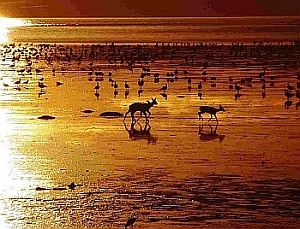
Loch Gruinart (pronounced ‘Groo-nyart') offers stunning views combined with unique wildlife, rare birds and thousands of geese in winter.
Park close to the bird hide and take a track through some sheltered woodland. This gives views over the loch, good birding opportunities and a viewing platform. Follow the road along the west side of Loch Gruinart: it passes Kilnave Chapel and Kilnave Cross, which were built around the same time as the Kildalton cross. Kilnave Chapel stands on an extremely remote part of Islay; after that, you’ll only come across Ardnave Farm and some houses before the road ends.
Somewhere special
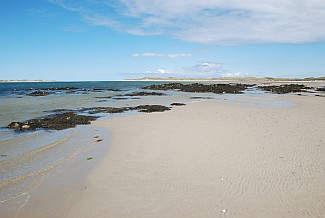
The reserve covers around 1,600 hectares on the north-west of Islay.
It's a special kind of reserve because it includes a working farm – the biggest in-hand farming operation on a nature reserve anywhere in the UK, possibly in Europe.
Roughly a third of the reserve comprises farmland for grazing, silage or arable crop production. The rest consists of around 250 hectares of mud flats and salt marsh, and 980 hectares of heather moorland.
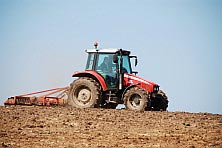
The main management tools are the stock – 250 beef-suckler cows and 150 black-faced ewes. Together these maintain and structure habitats for wildlife. Each field has a particular management regime to benefit a range of different species; through their activities, the RSPB aims to demonstrate that farming and wildlife can go hand in hand.
A year on the reserve
There’s always something to see here. Some say the most spectacular time to visit is in October, when internationally important numbers of barnacle and white-fronted geese return from Greenland for the winter. They fly down Loch Gruinart and spend the first week or so regaining their energy on the ‘Flats’, which the visitor centre observation window overlooks, before dispersing to other parts of the island. There are often over 18,000 geese on the Flats in the third week of October; they turn the fields black and white.
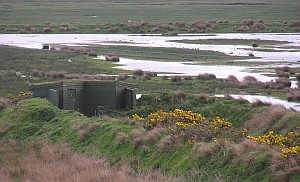
At the same time, brent geese and whooper swans fly in from Iceland and stop for a brief rest before heading to Ireland. This is also a good time to see birds of prey – hen harriers, sparrowhawks, merlin, peregrine and golden eagles. Redwings strip the berries bare on the rowan trees, flocks of small birds feed in the autumn stubble and choughs pull apart cowpats for dung-beetle larvae.
Winter: as the season changes, geese numbers drop, but many thousands of barnacle geese can still be seen returning to Loch Gruinart at dusk to roost on the mudflats. From the bird hide, situated between two flooded fields, stunning views can be gained of wintering wildfowl – large numbers of teal and wigeon, mallard, shoveler, golden-eye and pintail.
Peregrine and hen harrier are sometimes seen hunting and up to 1,000 white-fronted geese use the floods as a roost site. Dusk is a fantastic time to sit in the hide to both see and hear them coming in; if you’re lucky, you might even see a barn owl hunting along the roadsides on your way to the hide.
Spring: the geese head back to Greenland and the reserve suddenly seems much quieter. But there are new things to see. The spring migration is a good time to look out for unusual birds which have made a wrong turn. In 1998, for example, soon after the new hide had been built, great white egret, marsh harrier, wood sandpiper and blue-winged teal could be seen.
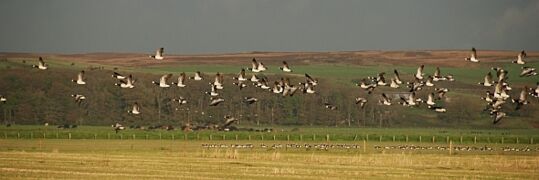
The floods are full of activity as breeding ducks and waders get down to hard work nesting and bringing up their young. Tiny roe deer fawns are reared among the rushes and magnificent red deer stags feed close by. Otters often swim through the shallows on the hunt for wader chicks and ducklings, causing a real commotion as lapwings and redshanks dive-bomb and shout abuse at them in an attempt to distract the otter away from their precious young.
In the adjacent silage fields lapwings perform impressive display flights, while elusive corncrakes call from specially created patches of nettle and iris. Female hen harriers fly up from their nests in the deep heather to catch food dropped by their hard-working partners in a dramatic mid-air-food-pass, while curlews give mournful cries over rough pastures. Butterflies, including the endangered marsh fritillary, dance among spectacular displays of wildflowers in herb-rich meadows and ungrazed moorland.
Late summer: many of the birds have finished breeding and soon leave the reserve to begin autumn migration; this when we carry out most of the management work on the fields. But time passes quickly, and before long autumn migrants from the arctic begin to appear – waders on their way south to Africa, ducks returning to the floods for the winter, and before you know it, it’s October again, and the air is filled with the calls of skein after skein of barnacle and white-fronted geese returning from Greenland.
Visitor centre
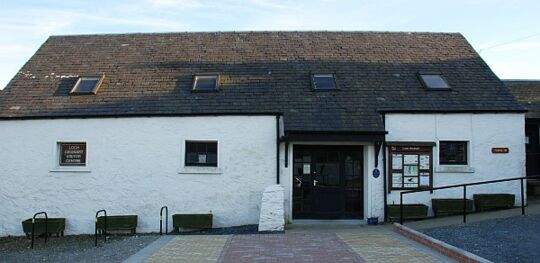
The reserve welcomes visitors. A visitor centre is open 10am-5pm daily, from which you can view Gruinart Flats from the observation window and explore at the interpretative panels and videos. The bird hide is always open. For those with limited mobility, these facilities (including the toilets) are accessible to wheelchairs, and you can drive right up to the door of the hide, but please phone in advance.
Guided walks
There are guided walks from April to October every Thursday at 10am (by arrangement from November to April). Additional walks are held in the summer. Sturdy footwear and waterproofs are advised. For more details, call the reserve office on +44 (0)1496 850 505 or email loch.gruinart@rspb.org.uk.
facts about the reserve
- 45% of the world’s population of Greenland barnacle geese visit the reserve in winter
- 60% of the world’s population of Greenland white-fronted geese visit the reserve in winter
- Up to 24,000 geese have been recorded here
- 200 pairs of lapwings and 100 pairs of redshanks breed on the reserve
- The reserve is nationally important for breeding shovelers and wintering teals
- 24 species of butterfly and dragonfly are found on the reserve, including the threatened marsh fritillary butterfly
- Otters, common and grey seals, hares, red and roe deer can be seen year-round
Conservation management
- Fields are grazed to provide suitable vegetation for wildlife
- Water levels are controlled for wetland birds throughout the year
- Hay/silage is cut as late as possible to allow corncrake chicks to fledge
- Fields are mown from the centre outwards to allow corncrakes to escape to conservation field margins
- Livestock is moved off wetland areas in spring to prevent the nests of wading birds from being trampled
- Corncrake corridors are established with tall vegetation e.g. nettles to provide early cover
Visitor centre contact details
RSPB Loch Gruinart Reserve, Bushmills Cottage, Gruinart, Bridgend, Isle of Islay, Argyll PA44 7PR. Tel: +44 (0)1496 850 505